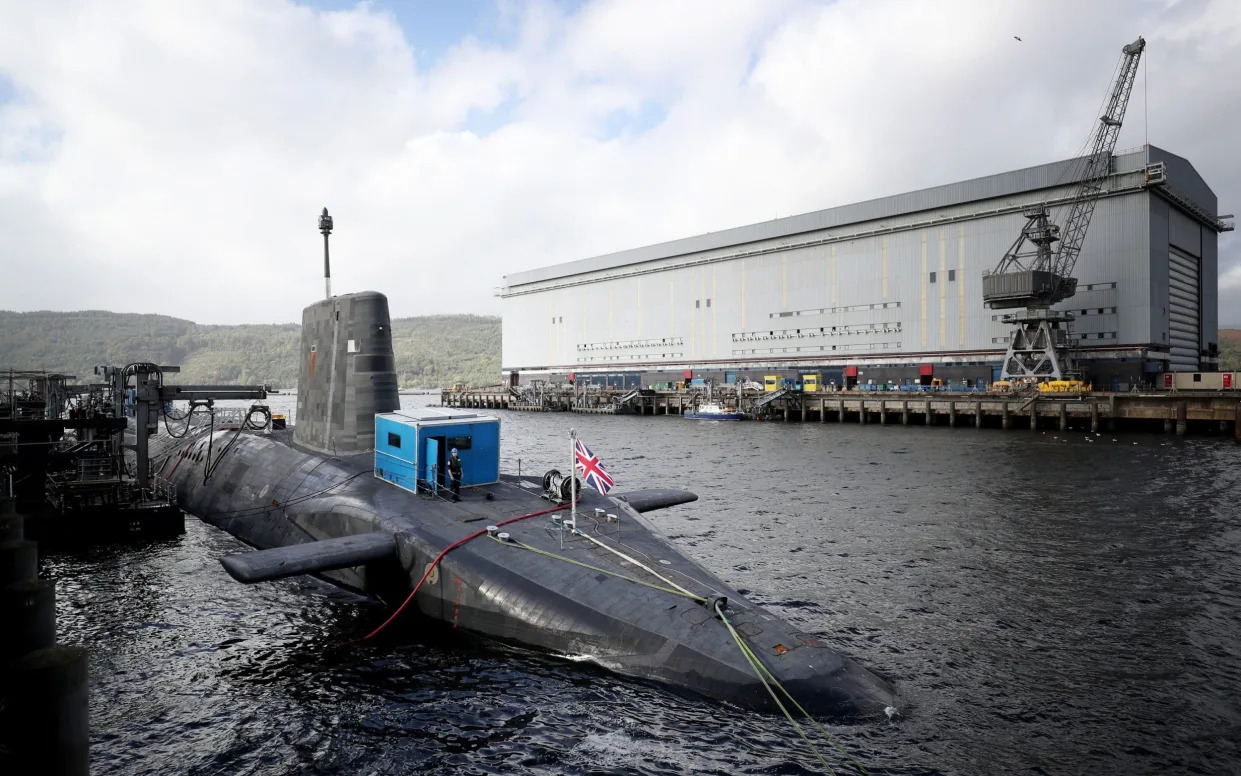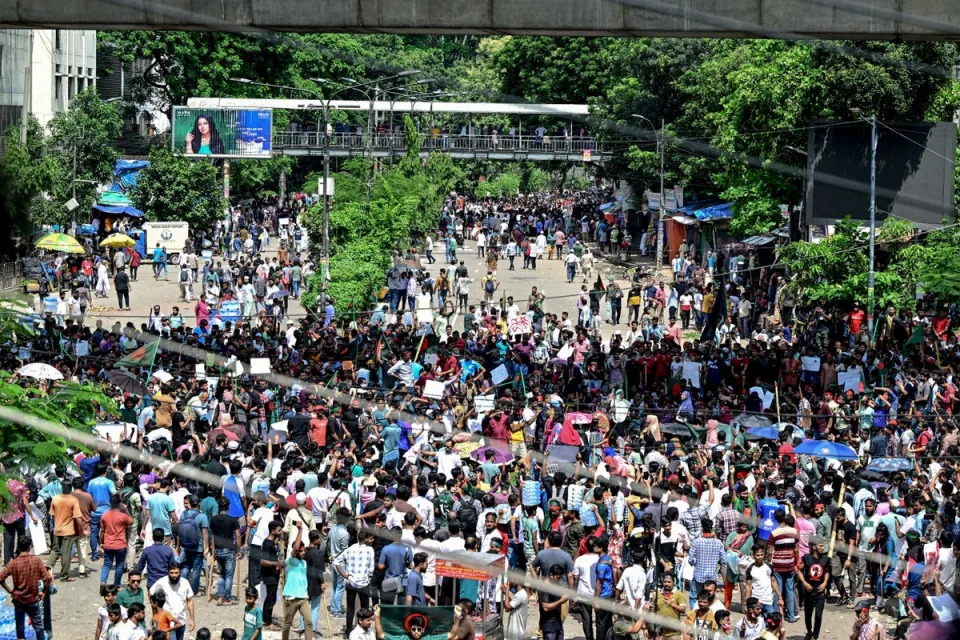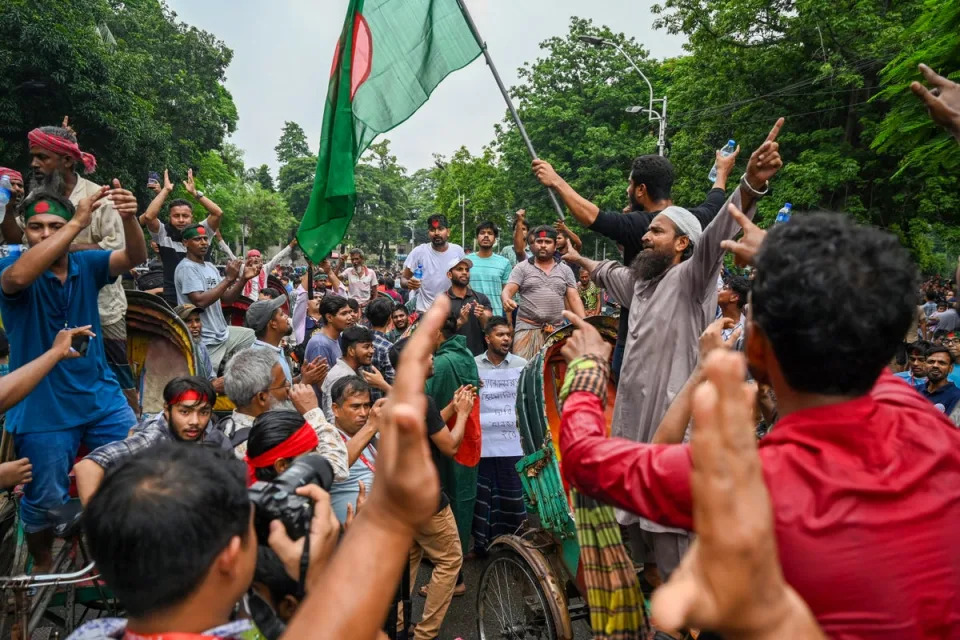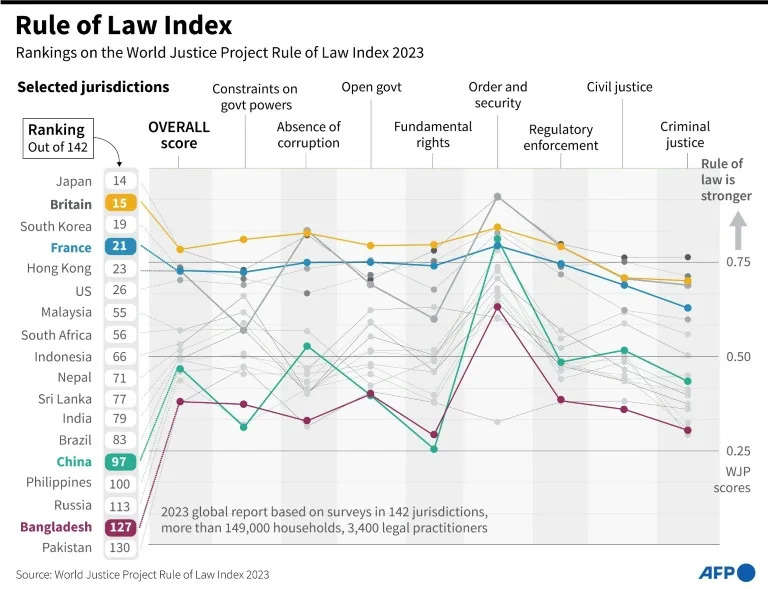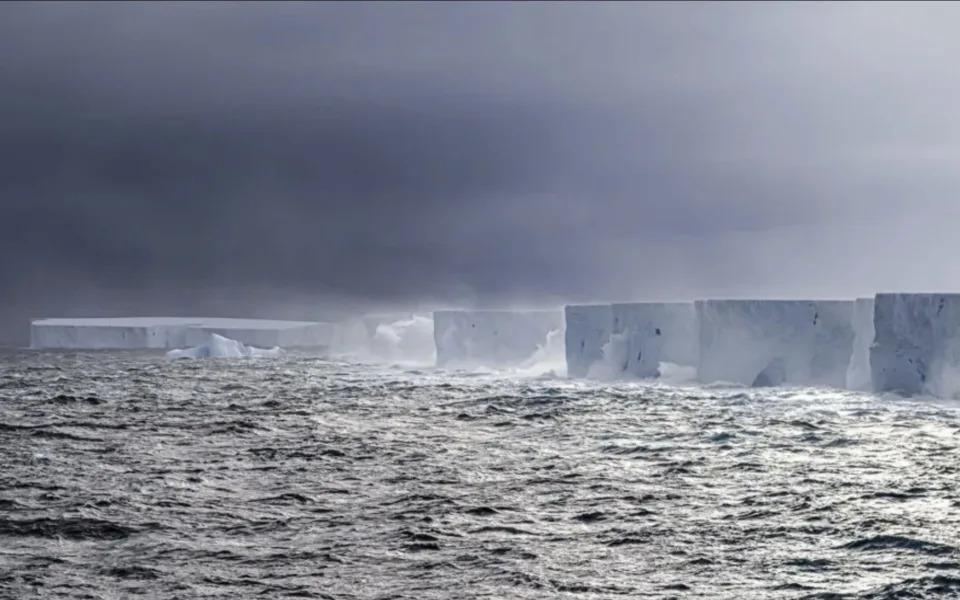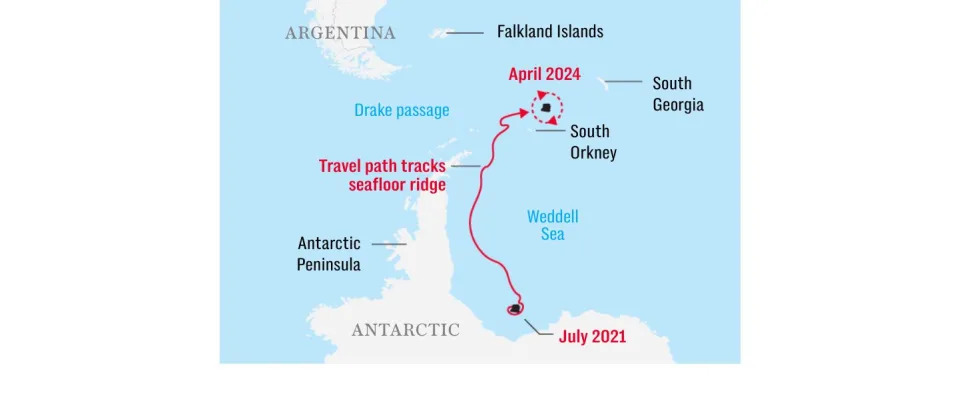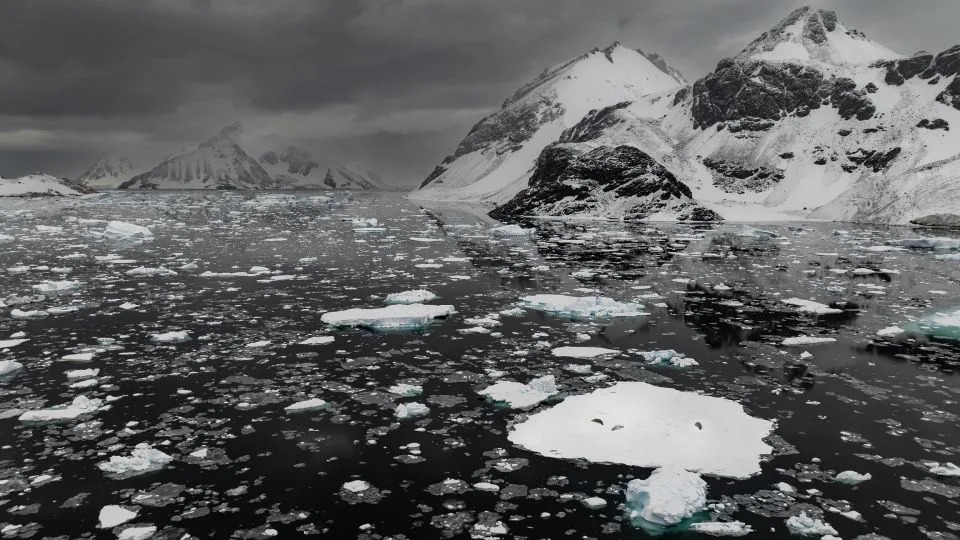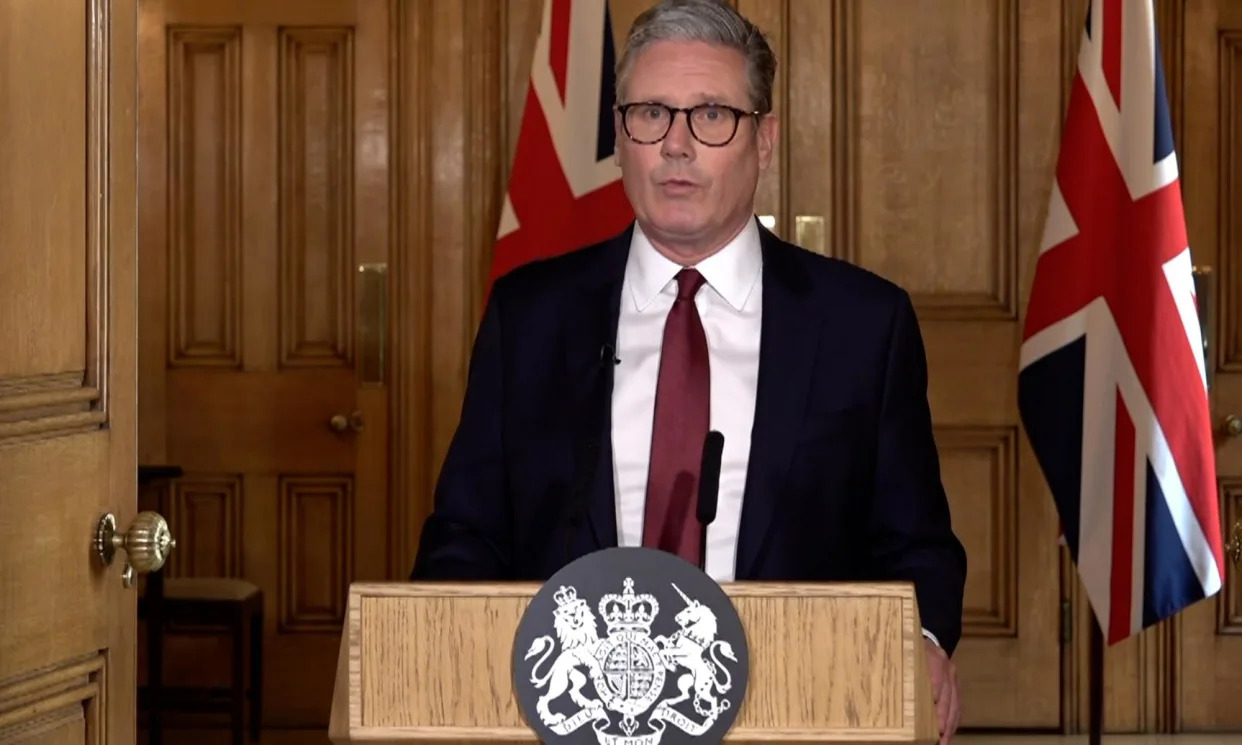KAREEM CHEHAYEB and MELANIE LIDMAN
Sat, August 3, 2024


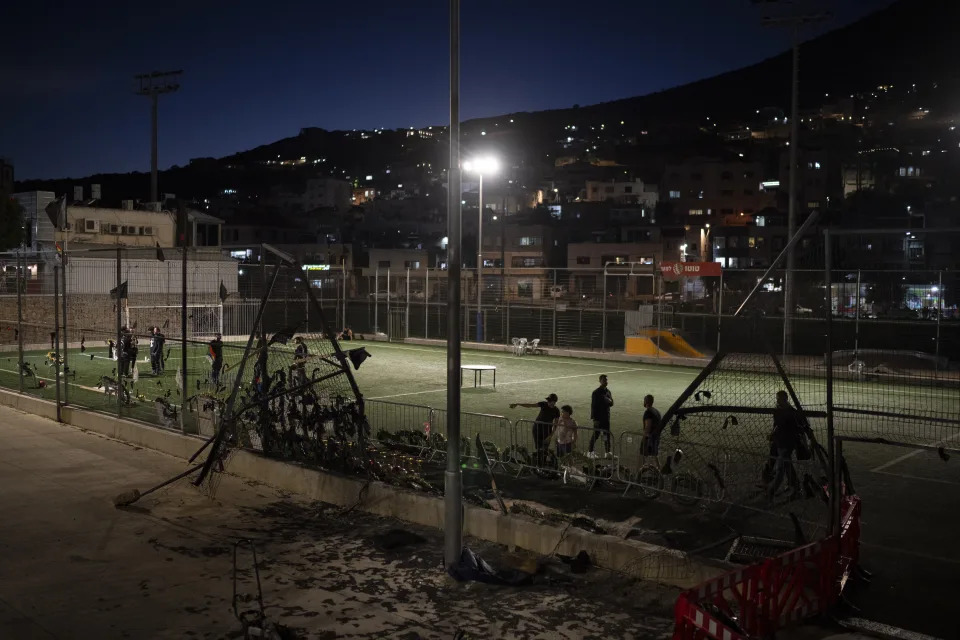
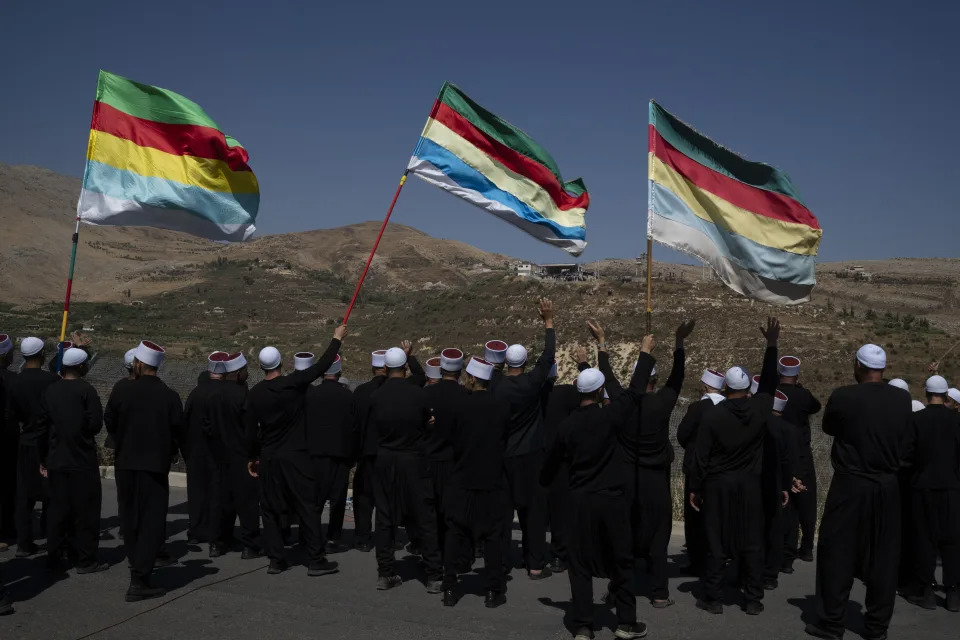
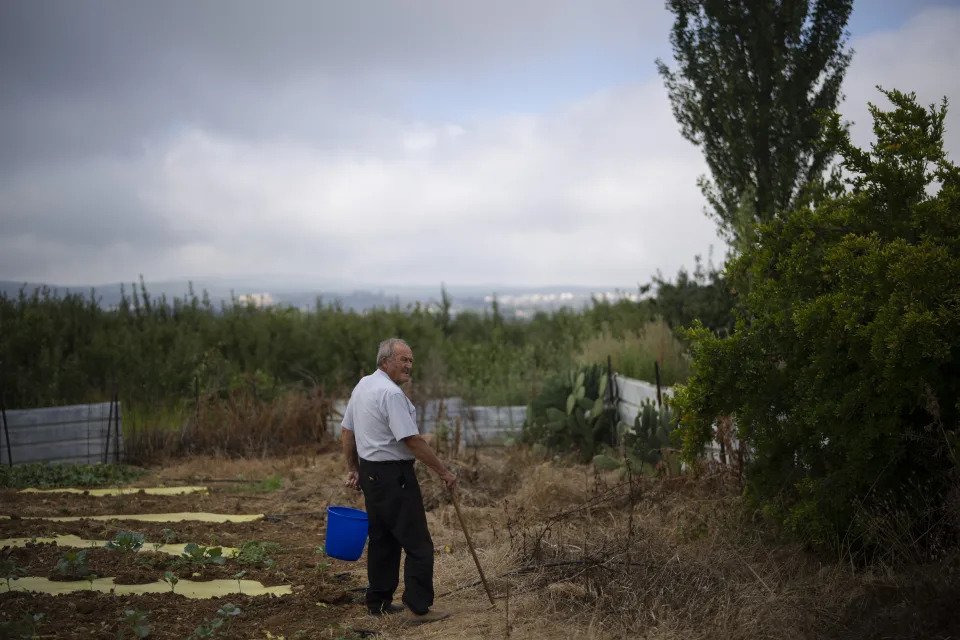
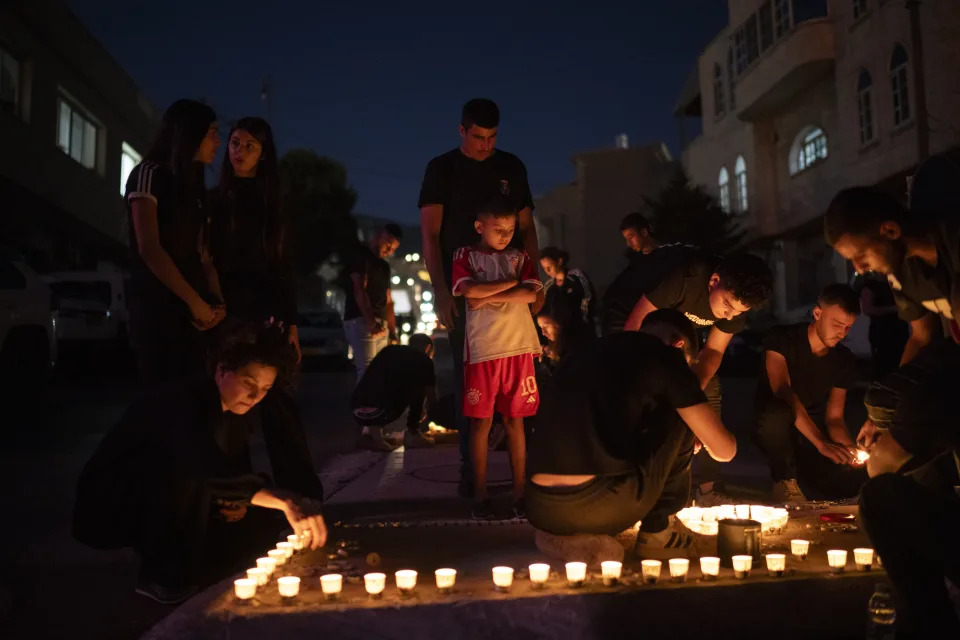

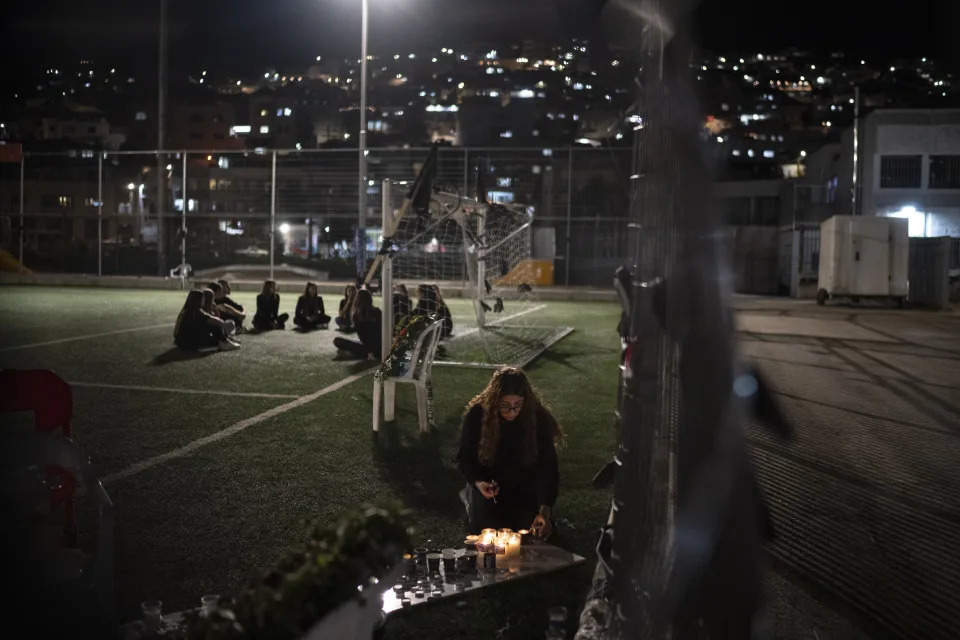

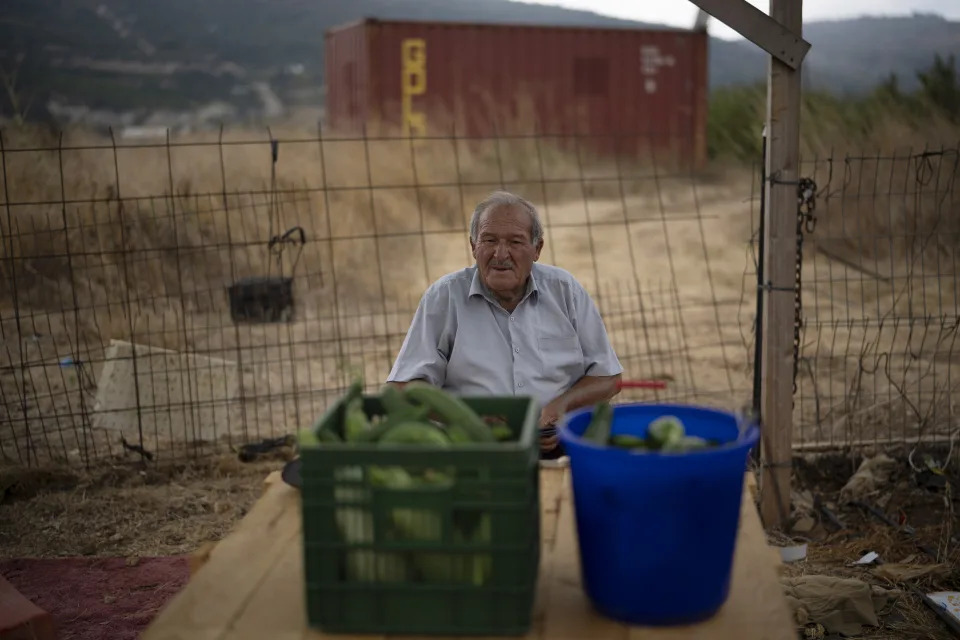


Alma's father, Ayman Fakhr al-Din, shows one her favourite soccer jerseys, as he stands in his daughter's room at the town of Majdal Shams, in the Israeli-annexed Golan Heights, Thursday, Aug. 1, 2024. (AP Photo/Leo Correa)
FARDIS, Lebanon (AP) — Alma Ayman Fakhr al-Din, a lively 11-year-old who loved basketball and learning languages, was playing on a soccer field a week ago in Majdal Shams, a Druze town in the Israeli-occupied Golan Heights, when the rocket hit.
Running to the site, her father Ayman pleaded with emergency workers for information about his daughter. “Suddenly I went to the corner, I saw such a tiny girl in a bag,” he said. He recognized her shoes, her hand. “I understood that that’s it, nothing is left, she’s gone.” She was among 12 children and teens killed.
The shocking bloodshed unified the Druze across the region in grief – and laid bare the complex identity of the small, insular religious minority, whose members are spread across Israel, the Golan Heights, Lebanon and Syria.
Who are the Druze?
The Druze religious sect began as a 10th-century offshoot of Ismailism, a branch of Shiite Islam. Outsiders are not allowed to convert, and most religious practices are shrouded in secrecy. There are just one million Druze – more than half of them in Syria, around 250,000 in Lebanon, 115,000 in Israel and 25,000 in the Golan Heights, which Israel captured from Syria in the 1967 Mideast War and annexed in 1981.
Separated by borders, each part of the Druze community has taken different paths, always with an eye on preserving their existence among larger powers. Druze in Lebanon and Syria adopted Arab nationalism, including support for the Palestinian cause. In Israel, Druze are highly regarded for their loyalty to the state and their military service, with many entering elite combat units, including fighting in Gaza. In the Golan, the Druze navigate their historically Syrian identity while living under Israeli occupation.
The communities have always kept up connections and tried to maintain civility over their differences. That, however, has been strained by 10 months of war in Gaza. Now after the Majdal Shams strike, many Druze fear even worse divisions if the region tips into all-out regional war.
“Our children”
After the attack, a string of Israeli politicians rushed to Majdal Shams to show solidarity with the grieving families and emphasize the strong connection between Israel and the Druze.
“These children are our children, they are the children of all of us,” Prime Minister Benjamin Netanyahu said, visiting the soccer field.
Netanyahu’s presence also sparked angry protests by some residents who accused officials of exploiting the tragedy for political purposes.
Many Druze in the Israeli-held part of the Golan have kept their allegiance to Syria. About 20% have taken Israeli citizenship, said Yusri Hazran of Jerusalem's Hebrew University, who is Druze and researches minorities in the Middle East.
In the past 15 years, that trend has increased, said Hazran, as Israel has more strongly integrated the Golan, whose 1981 annexation is not widely recognized.
Meanwhile, Israel’s Druze community, centered in the north of the country, tends to tout with pride their Israeli identity. Around 80% of the male Druze population enlists in the military, higher than the around 70% of Israeli Jews, according to official statistics. Ten Druze soldiers have been killed in the war in the Gaza Strip, a large proportion given their community’s size.
Sheikh Moafaq Tarif, the spiritual leader of the Druze in Israel, said he wasn’t surprised by the wave of national compassion. “During the time of mourning, everyone is talking about support,” he said.
He hoped support would continue after the tragedy has faded from headlines.
“There’s so much that’s needed to fix here.” He pointed to the significant discrimination Druze faced in Israel. A third of Druze homes are not connected to electricity, he said. The community was furious over a 2018 Israeli law that defined the country as a Jewish state and made no mention of its minorities.
In the Golan, some still see their bond lying with neighboring Arab countries.
Hail Abu Jabal, an 84-year-old Druze activist in Majdal Shams, was detained by Israel in the past over his opposition to its rule.
Before European powers divided up the Mideast in the early 20th century, “this region was one region. The Druze were spread out in one country,” he said. “There is a kinship relationship, there is a marriage relationship, and there is a relationship of belonging."
Divided by borders
In the southern Lebanese village of Fardis, near the Israeli border, rocket fire echoed, part of the nearly daily exchanges between Israel and Hezbollah going on for months. From the home of Wissam Sliqa, charred trees were visible on the otherwise verdant mountains, signs of recent Israeli strikes.
Israel is “once again trying to plant the seeds of discord,” said Sliqa, the religious affairs adviser for Lebanon’s top Druze religious leader.
He urged Israeli Druze not to join the war in Gaza or the increasingly volatile confrontation across the Lebanese-Israeli border.
Druze of Syria and Lebanon tend to avoid criticizing their brethren in Israel. Though more are publicly encouraging Druze to refuse to serve in the Israeli military, they withhold judgment on those who do.
“They are behaving how they see is suitable to them,” Sliqa acknowledged. “We don’t dictate to them, and they don’t dictate to us.”
While most of Lebanon’s Druze live in the country's central mountains, Druze-majority villages are also scattered around the south next to Muslim and Christian neighbors.
Lebanese and Syrian Druze have historically been drawn to Arab nationalist movements. Many point to their role in Arab resistance to European colonial rule a century ago and their strong support for Palestinians today.
“The Druze never considered themselves an ethnic minority at all, but a part of the Arab and Islamic majority in the region,” said Lebanese Druze legislator Wael Abou Faour.
Walid Jumblatt, arguably the region's most powerful Druze figure, once led forces fighting alongside Palestinian factions against Israeli troops and their allies in Lebanon. He now leads the Druze in Lebanon’s volatile sectarian power-sharing politics, where his community’s power goes well beyond its size.
Last month, he and Tarif, Israel's Druze leader, engaged in a startlingly scathing exchange of open letters, airing differences over the Israel-Hamas war.
Jumblatt criticized Druze soldiers fighting in Gaza. Tarif in turn said his community was happy having the rights and duties of “citizens of a democratic state.” Jumblatt shot back denouncing Tarif for meeting with Netanyahu, calling the Israeli military offensive in Gaza “an aggression against humanity.”
“He lives in Lebanon, and he’s saying his opinion,” Tarif told The Associated Press. “We are Israelis, and we are proud.”
Despite differences, the various Druze communities maintain close ties and support each other on humanitarian issues, he said.
In the southern Lebanese town of Hasbaya, Sheikh Amin Khair, a Druze farmer, pointed to a cluster of trees and shrubs by his pear and pomegranate groves. In 1982, Druze fighters fired rockets at Israel from there, he said proudly. That year was the start of Israel's 18-year occupation of south Lebanon.
But rather than criticizing Druze in the Israeli army, Khair said he would rather speak positively of voices among Israeli Druze that have backed the Palestinian cause.
He recited a verse by writer Samih al-Qassam, an Israeli Druze and an Arab nationalist: “And until my last heartbeat … I will resist.”
Small white coffins
After the Majdal Shams strike, the Druze community’s tensions risk being pulled even more tightly if a full-fledged war erupts.
Israel accused Hezbollah of being behind the strike, saying the rocket type and trajectory point clearly to the Iranian-backed group. The Lebanese militant group offered a rare denial.
Lebanon’s Jumblatt is often politically at odds with Hezbollah, but this week he echoed its denial and accused Israel of fueling divisions by accusing the group.
On Tuesday, an Israeli airstrike killed a top Hezbollah commander in Beirut in retaliation. The next day, a blast in the Iranian capital killed Hamas' political chief Ismail Haniyeh. Iran has accused Israel of being behind the attack and vowed retaliation.
As the region awaits Hezbollah and Iran’s response, many Druze are pleading to stop the bloodshed.
“We reject shedding even a single drop of blood under the pretext of avenging our children,” the Golan Heights Druze religious committee said in a statement on Monday.
Hundreds of Syrian Druze who gathered in the nearby Syrian town of Quneitra to hold a memorial service for the children blamed Israel for the deaths.
Across Majdal Shams, there was raw pain as the community buried 12 small white coffins in the span of 24 hours.
“No one wins in war, there’s only losing,” said Majdal Shams resident Bhaa Brik.
___
Lidman reported from Tel Aviv, Israel. Associated Press reporters Alon Bernstein and Leo Correa contributed to this report from Majdal Shams, Golan Heights.
